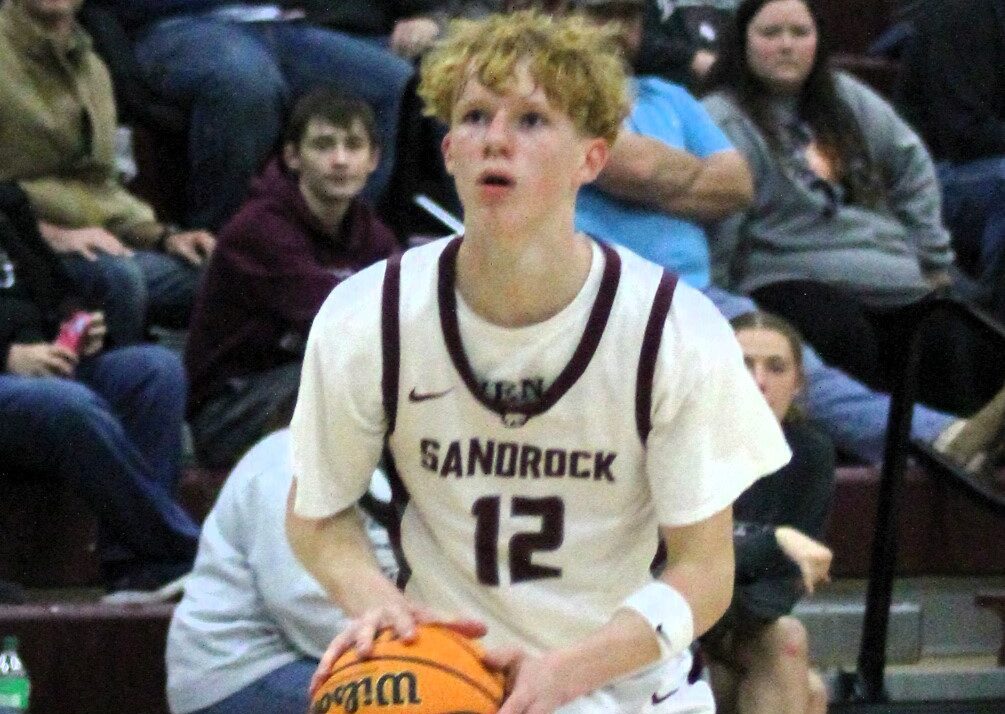.png)
(CHIPPEWA FALLS, Wis.) — From the deck his father built by hand, Eric Halfen watches strangers comb through the artifacts of his life. The auctioneer’s chant ricochets across the yard, where everything from board games and mugs to the family’s home itself is being sold.
Eric grew up in this home in Chippewa Falls, Wisconsin. His father, Terry Halfen, poured the cement for the foundation and laid the bricks one by one. When Terry was diagnosed with cancer in late 2023, Eric moved back home to care for him.
Terry was being treated at the nearby hospital, Sacred Heart in Eau Claire, Wisconsin, but it shut down with little notice last year, terminating almost 1400 employees. The city demanded the state open an investigation and called the closure “abrupt and devastating.” But the state never opened one.
“It caused doctors to leave the area,” Eric said. “They didn’t have the proper doctor to do the procedures.”
So every day, Eric drove hours to a hospital farther away — sometimes six hours in a day for multiple trips — to sit by his father’s bedside. This past June, the family finally brought Terry back home. Just 48 hours later, he was gone.
Eric said that had Sacred Heart stayed open, “it would’ve been a lot less traumatic on him.”
While Eric can’t say for certain that it would have helped his father live longer, doctors and paramedics tell ABC News they’ve already seen conditions worsen in irreversible ways — even deaths — because of the region’s shuttered hospitals.
On the same day Sacred Heart closed its doors in Eau Claire, another hospital — St. Joseph’s in Chippewa Falls — also shuttered in neighboring Chippewa Falls because of financial difficulties.
There were only four major hospitals in the region. Now half are gone, sending shockwaves through the community and the rural areas they served.
A nationwide crisis
What’s happened to this part of western Wisconsin is part of a much larger crisis. Across the country, hospitals are vanishing, and a new wave of Medicaid cuts could accelerate the collapse.
President Donald Trump’s Big Beautiful Bill slashes nearly $1 trillion in Medicaid funding over the next decade. The administration says this cuts wasteful spending and will create a $50 billion fund for rural hospitals. But many health experts say that’s not nearly enough.
Already, nearly 100 rural hospitals have closed or eliminated inpatient services in the last decade, threatening health care access to some of the more than 16 million people living in rural communities who rely on Medicaid.
While the full impact of Medicaid cuts could take years to unfold, doctors say the system is already buckling. Many rural hospitals are already operating on razor-thin or negative margins, and they see these looming Medicaid changes could push them over the edge.
A representative for Hospital Sisters Health System, the owner of those two shuttered hospitals in Eau Claire and Chippewa Falls, said in a statement to ABC News that closing them down “was one of the most difficult and heartbreaking decisions.”
“These hospitals served their communities for more than a century and we recognize the personal impact this has had on the patients, colleagues and families who relied on us for care,” the statement continued, citing challenges including shrinking margins, workforce shortages, a growing number of patients without commercial insurance coverage, declining population and the fallout from the COVID-19 pandemic.
“Closures that are occurring across the country should be a wake-up call about the crisis rural health care providers are facing,” the representative said.
Impacted care
Dr. Brady Didion, a family physician who used to practice at St. Joseph’s, remembers the cascading fallout after the hospitals closed.
“People missing out on care, people having delayed care, diagnoses weren’t made. Appropriate imaging lab and surgical services weren’t made,” he said. “A lot of people and families suffered.”
Didion later left the area and now practices at a rural hospital 50 miles away, where he still feels the impact. The closure of Sacred Heart and St. Joseph’s means fewer places to transfer critical patients, with the remaining hospitals past capacity.
“I know that we have had delays in care such that it resulted in someone getting irreversible progression in their disease state or even dying,” Didion said. “I’ve literally been up all night on the phone trying to call to get someone care who needed it in our small hospital because these places were full.”
Day to day, that means keeping sicker patients longer, leveling with families about wait times and planning transfers that can take hours instead of minutes.
“It’s not just inconvenience — it is really loss of time, which in a critical disease state is super important and it can be a loss of life,” he said.
Toll on patients and staff
When a hospital closes, the rest of the community is left to pick up the pieces — including emergency services.
Chippewa Falls Fire Station Chief Jason Thom told ABC News his crews no longer have the option of stabilizing critical patients at St. Joseph’s Hospital, which once sat just down the street.
Now, he says, transport times often stretch an hour, or they rely on helicopters, but those aren’t always available.
The longer rides, Thom adds, take a toll on both patients and staff.
“It could be detrimental to the patient because we can do a lot of things; however, we can’t do everything. If they require a surgical procedure or in the event of somebody having a heart attack… we can maintain and get them there as quickly as we can. At that point, hope for the best that those patients are going to survive,” Thom said.
Inside the remaining hospitals, the spillover is visible.
“One of the local hospitals — the ambulance garage, it has two bays in it, which used to be for the ambulances to pull in and unload patients — is now set up basically as a triage area with beds in it for the overflow,” Thom says. “Waiting rooms are typically full. Patient rooms are full.”
The paramedics at the station say they are seeing patients wait longer to call 911 — and by the time they do, they’re often much sicker. The longer drives, combined with overwhelmed emergency departments, compound the delay.
Many residents can’t get regular doctor appointments now, and some hesitate to seek help because they can’t afford a ride home from a hospital that’s farther away.
“They’re more sick when we see them,” Brooke Sommerfeld, a paramedic at the station, told ABC News. “And so you’re kind of watching them… decompose almost in the back of the ambulance when you have them,” she said.
“It’s overwhelming,” she adds. “We know what we’re doing; we are trained in our skills, but at the same time, when you know… ultimately what they need is somewhere an hour away… it makes us feel almost helpless.”
Copyright © 2025, ABC Audio. All rights reserved.



